This is part of a series of posts about the Nikon D5. The series starts here.
In the previous post we looks at short-exposure, dark-field histograms from the Nikon D5 at low (ish) ISOs. Now we’ll look at the higher ISOs.
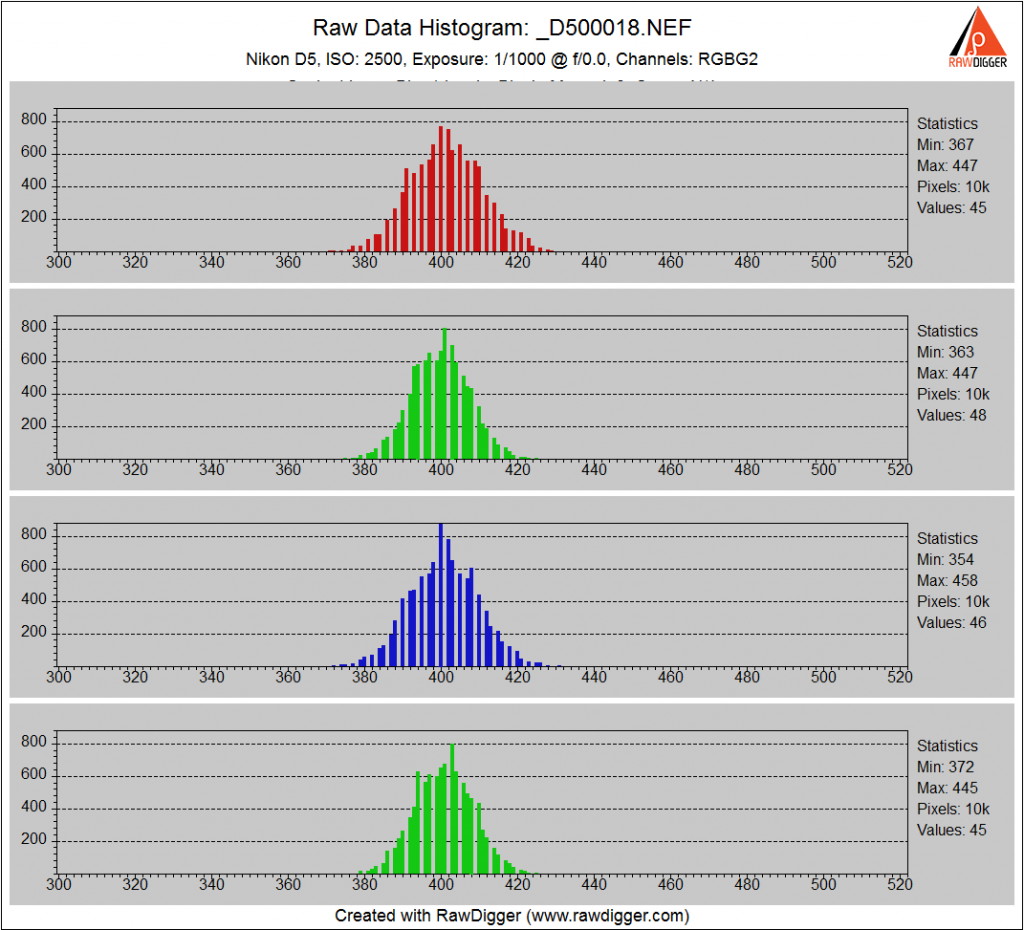
At ISO 2500, the histogram tightens up again.
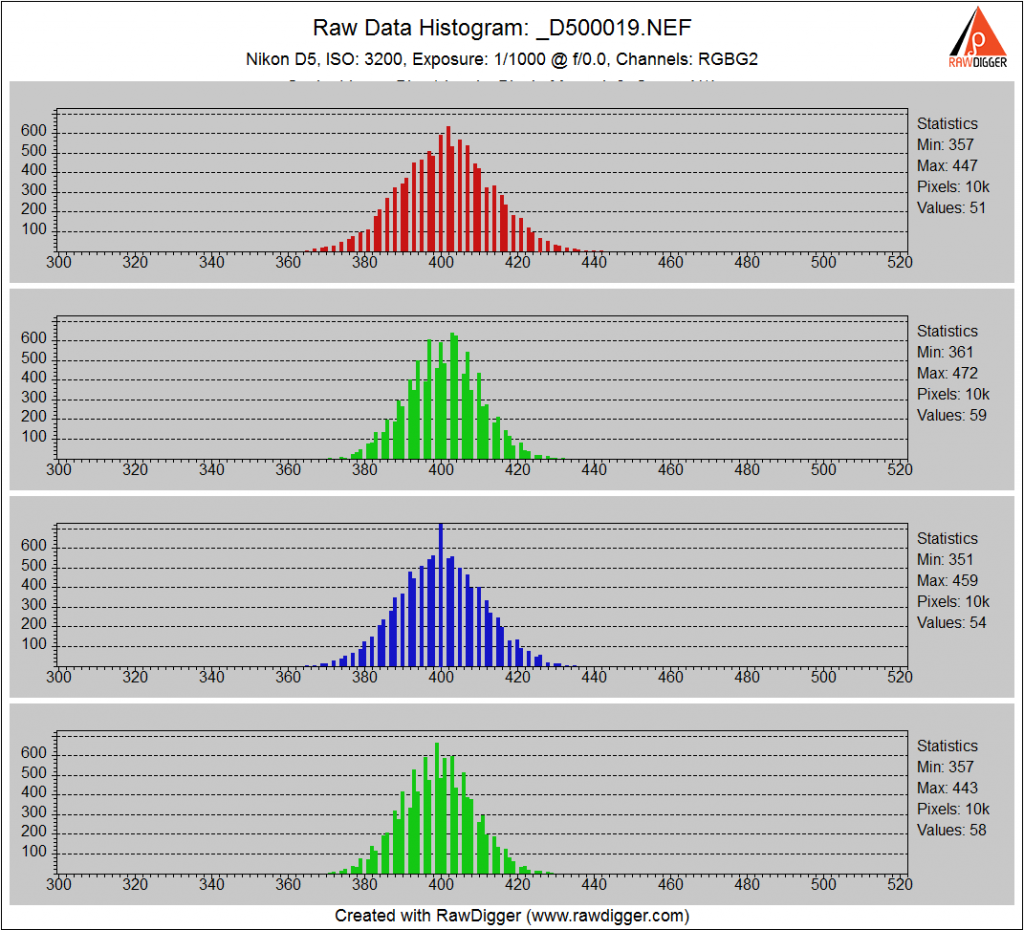
ISO 3200 has the same input-referred noise as ISO 2500.
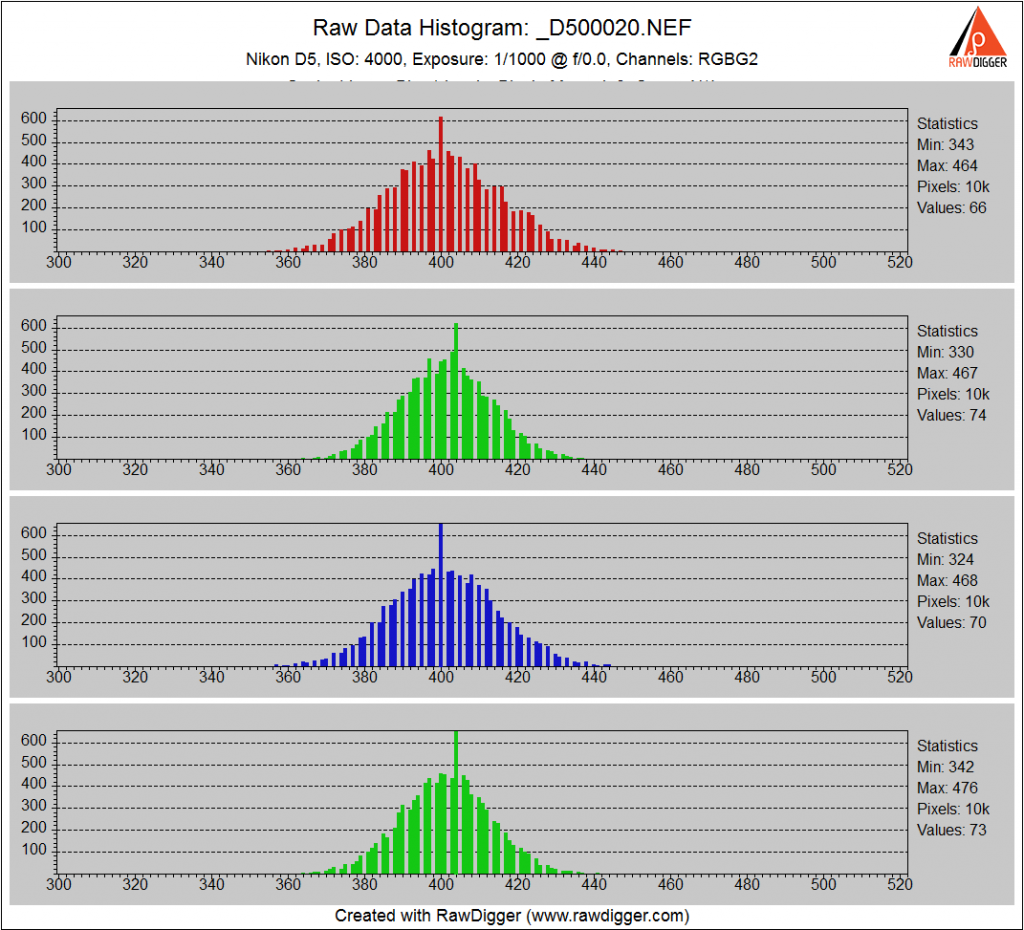
ISO 4000 has the same input referred read noise as ISO 2500 and ISO 3200.
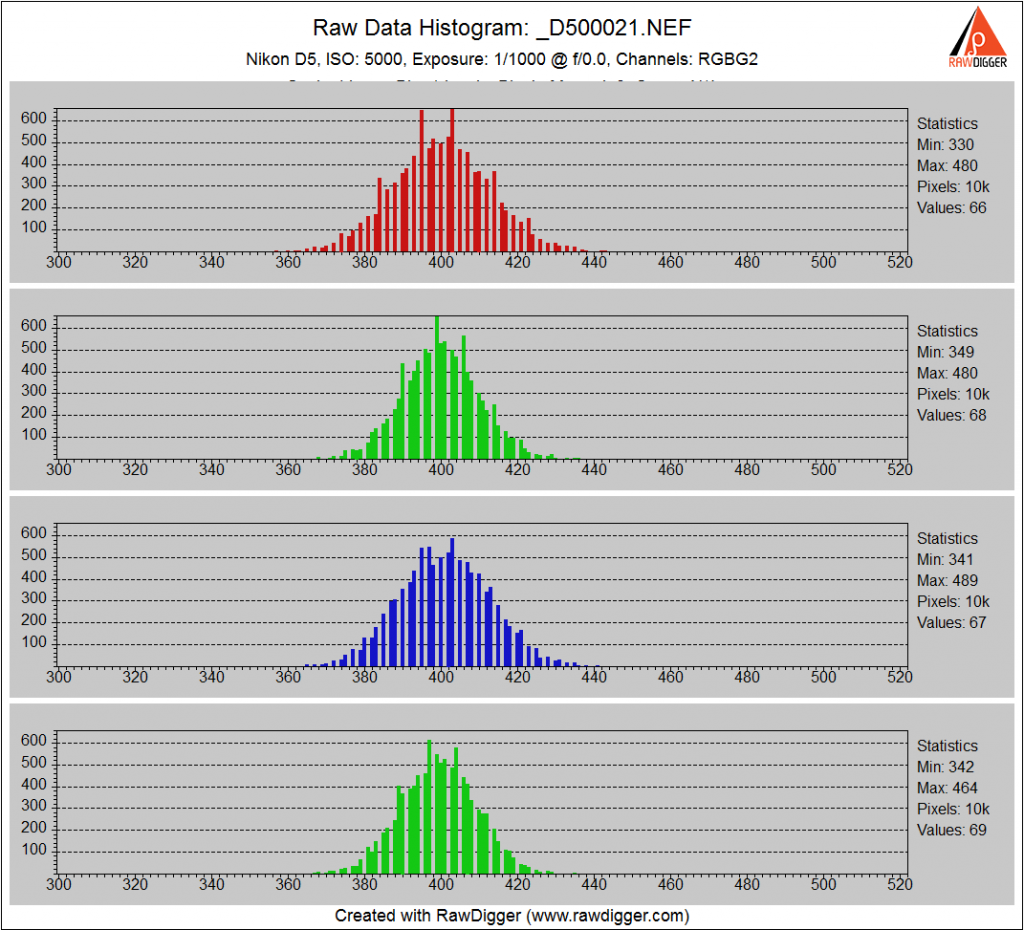
At ISO 5000, the read noise tightens up a bit.
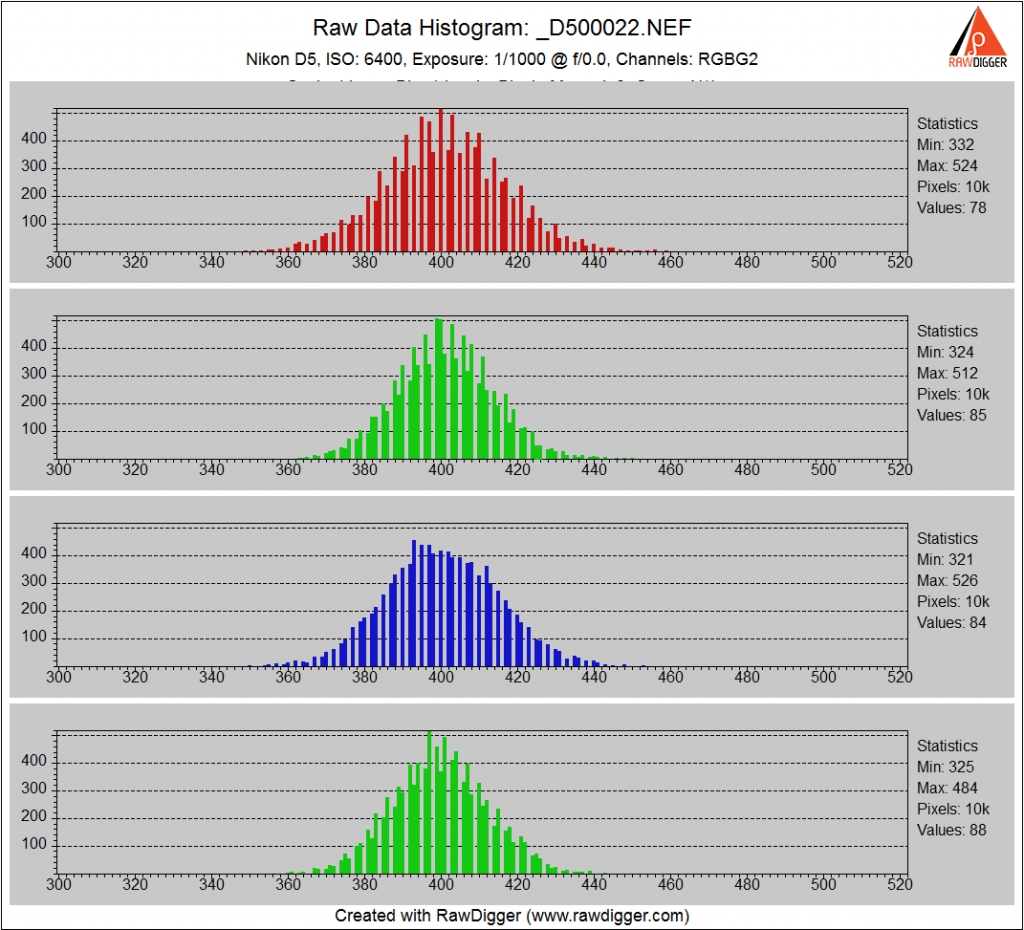
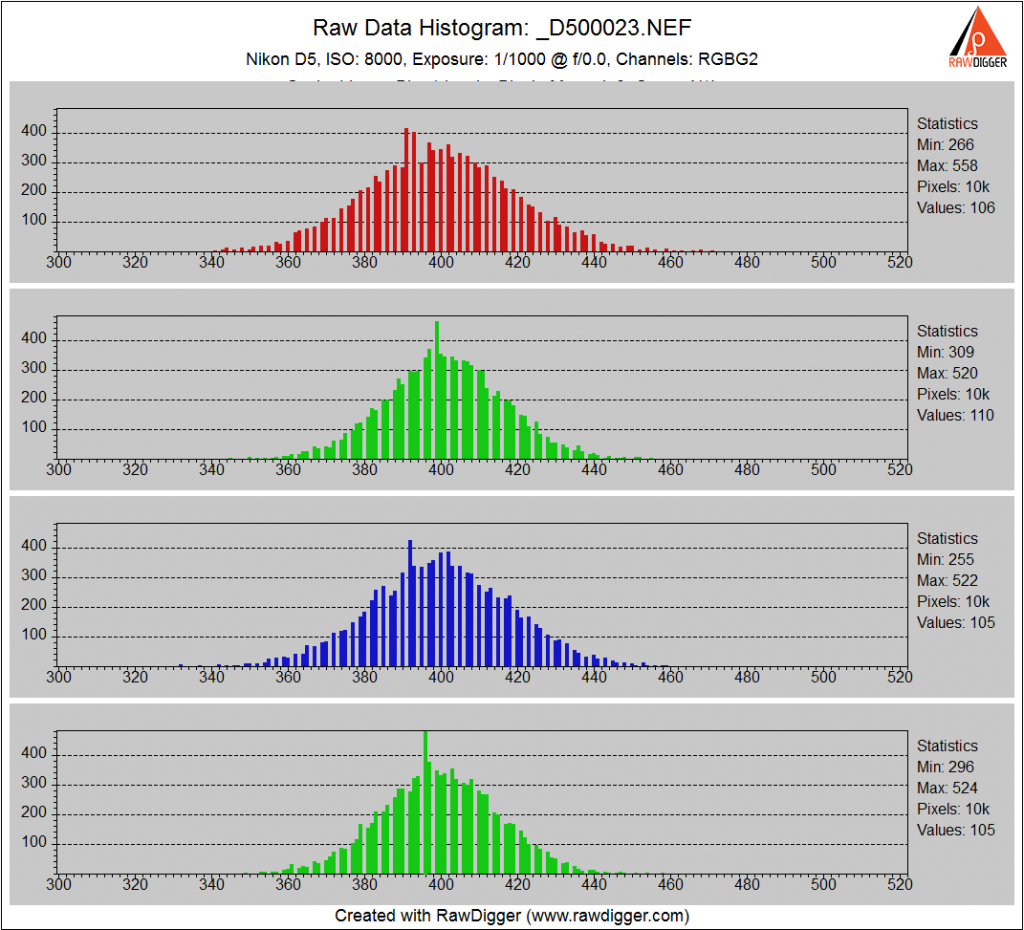

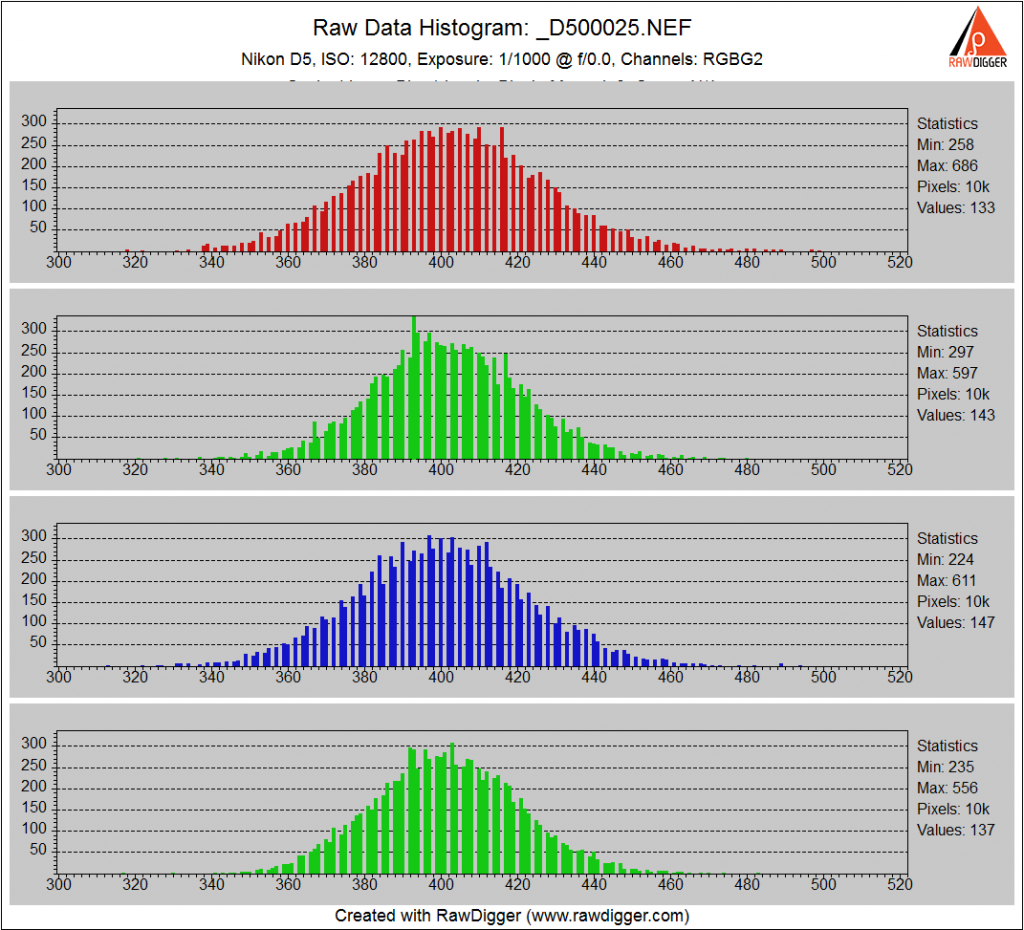
From now on, the noise goes up without any of the sawteeth.
Let’s pause for a moment and admire the above ISO 12800 histogram. I don’t believe I’ve ever seen one that’s as nice as that. The dropouts are really no worse than the histogram at base ISO.
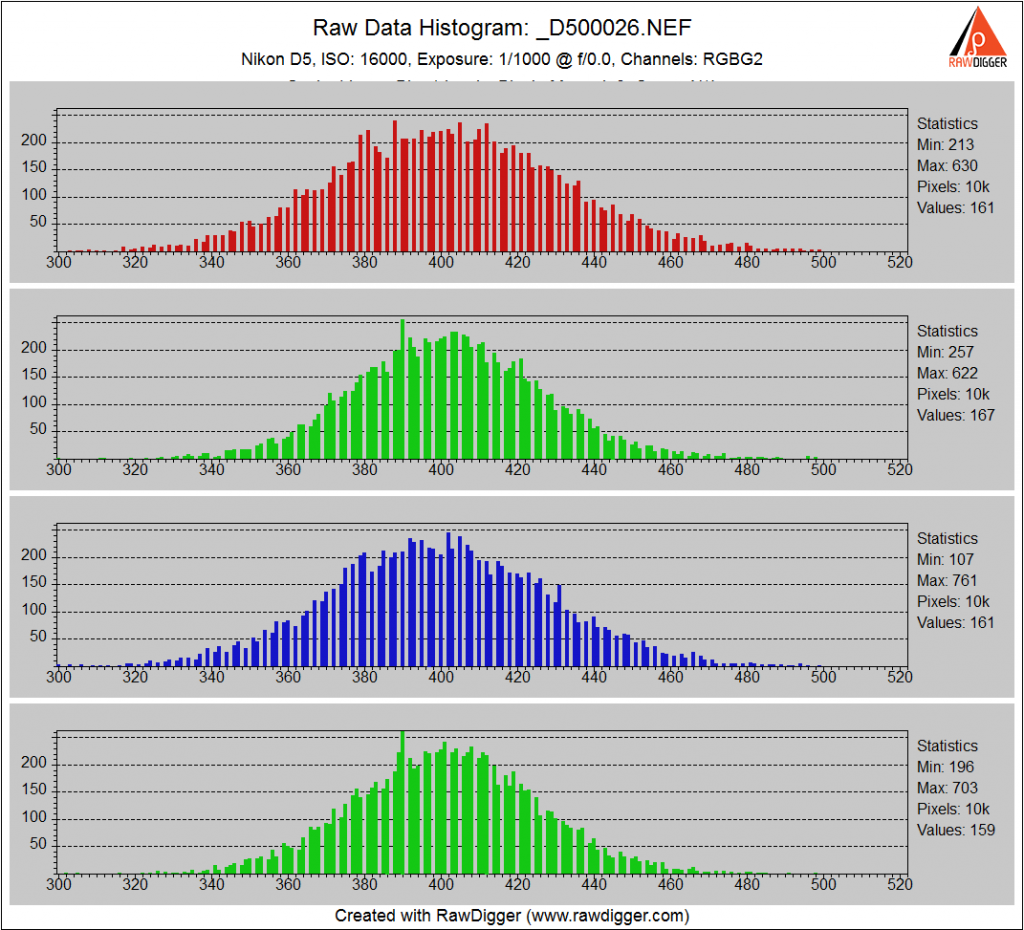
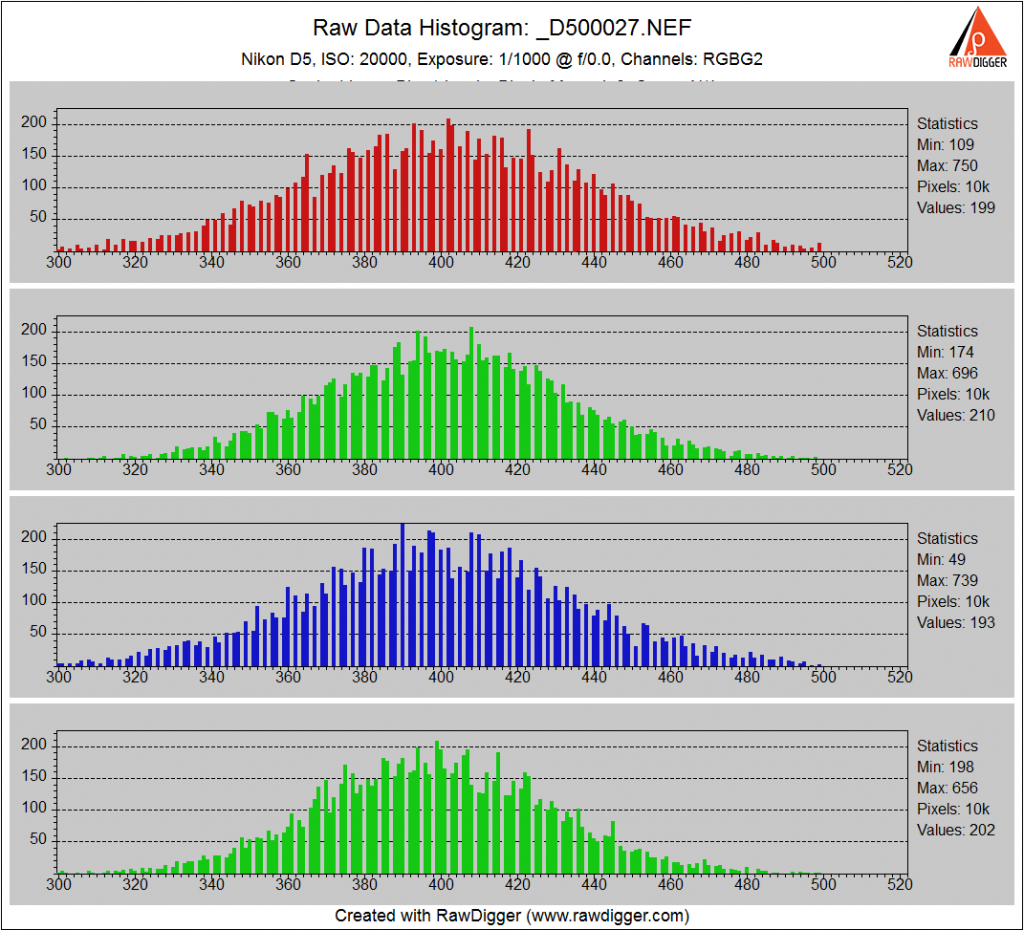
Now I’m going to have to change scale.
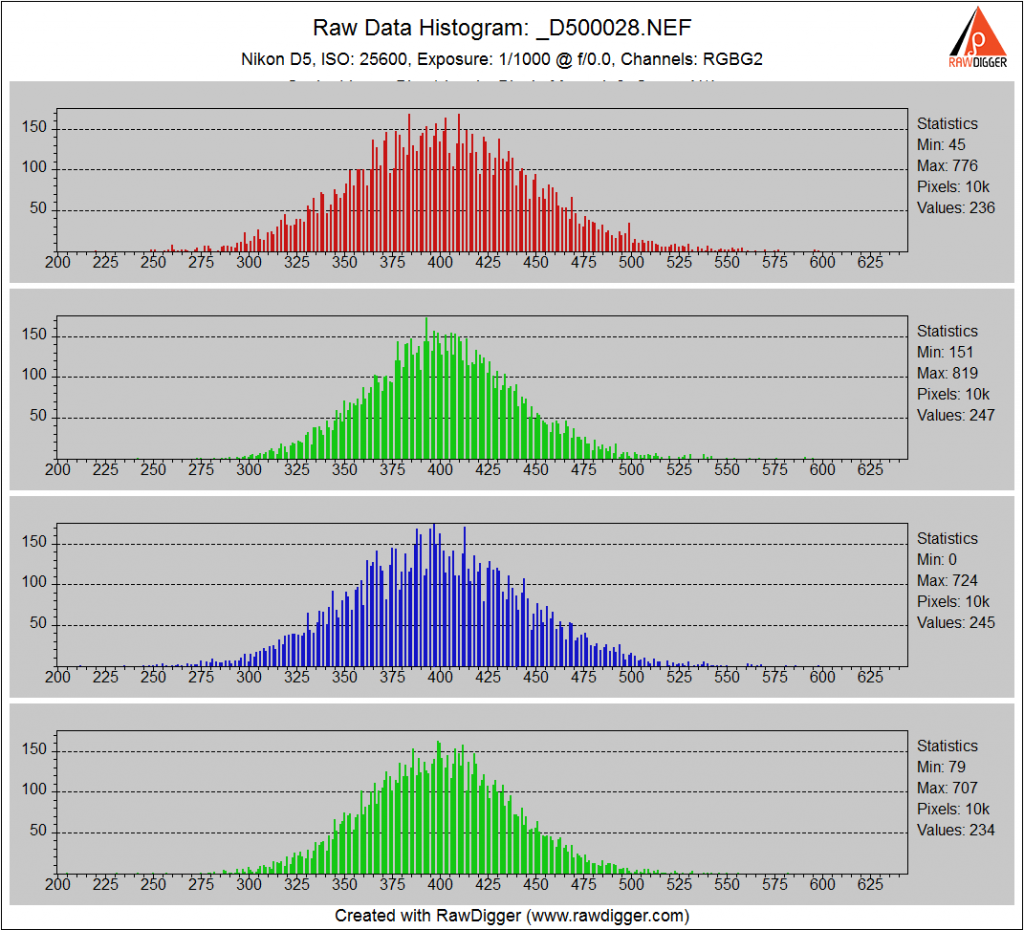
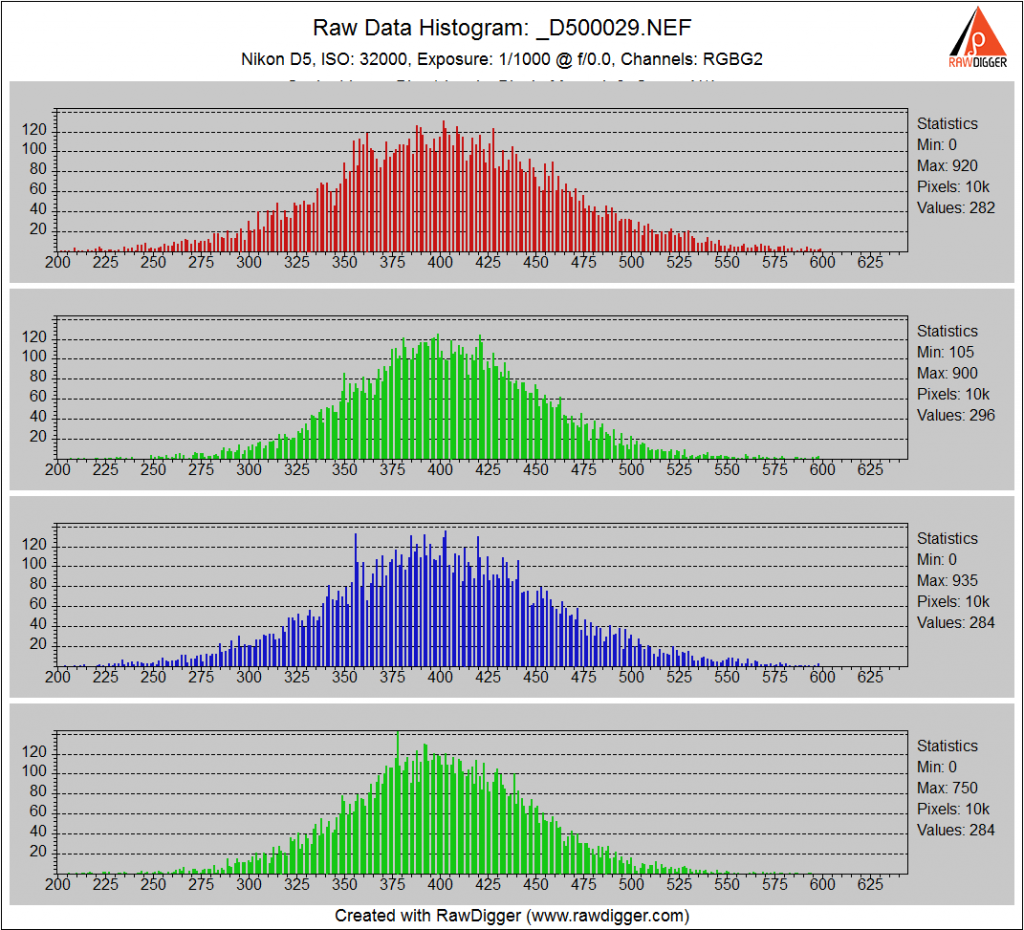
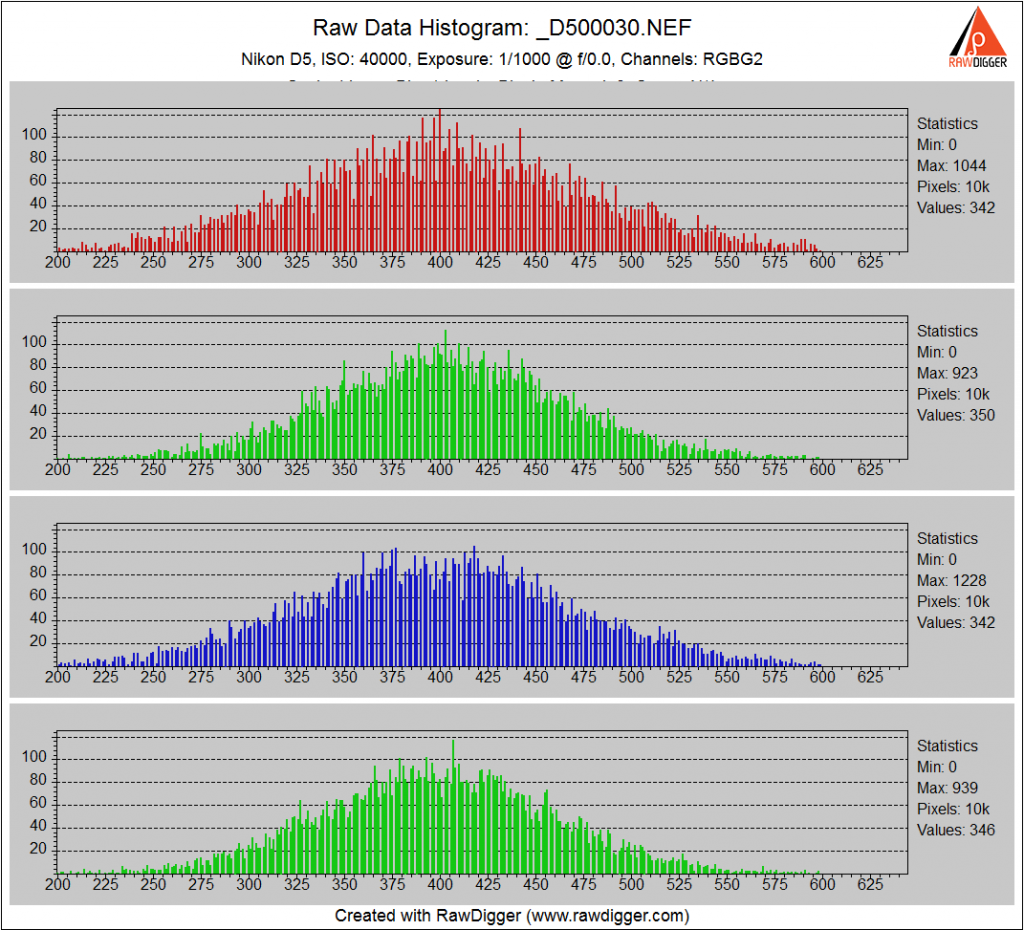
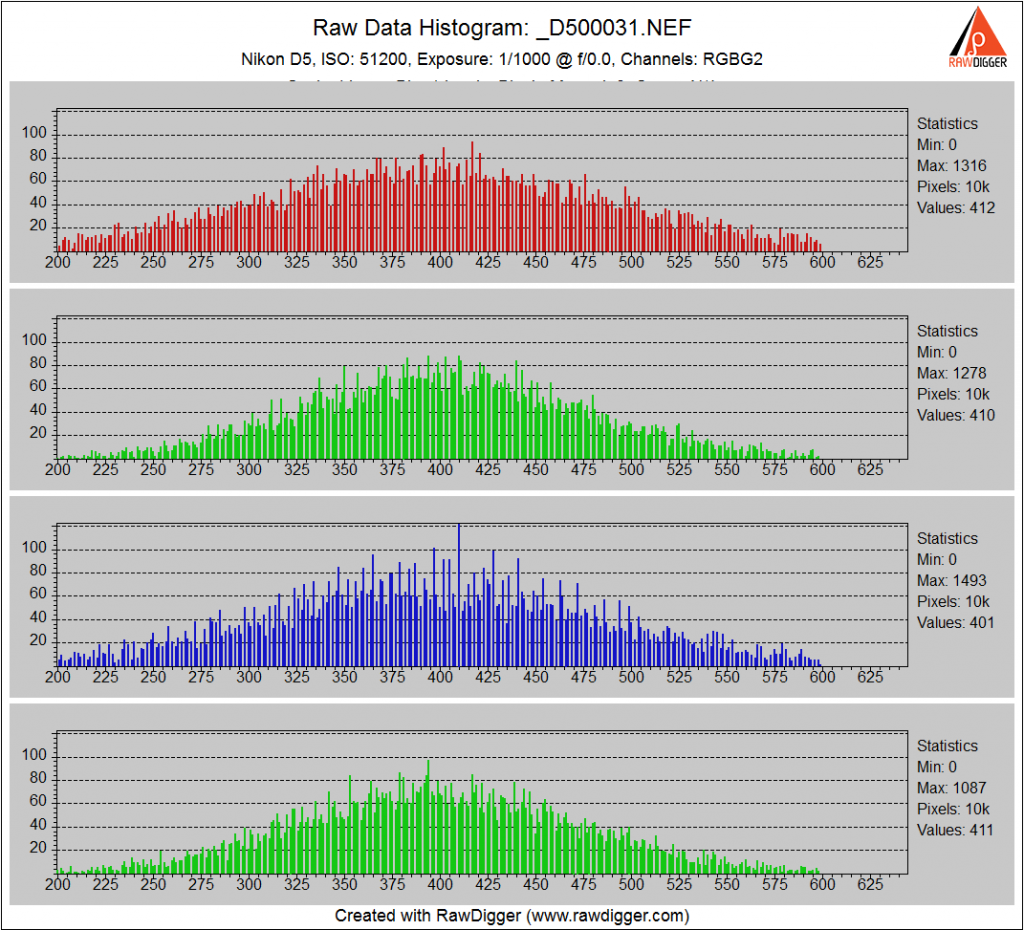
Changing scale again:

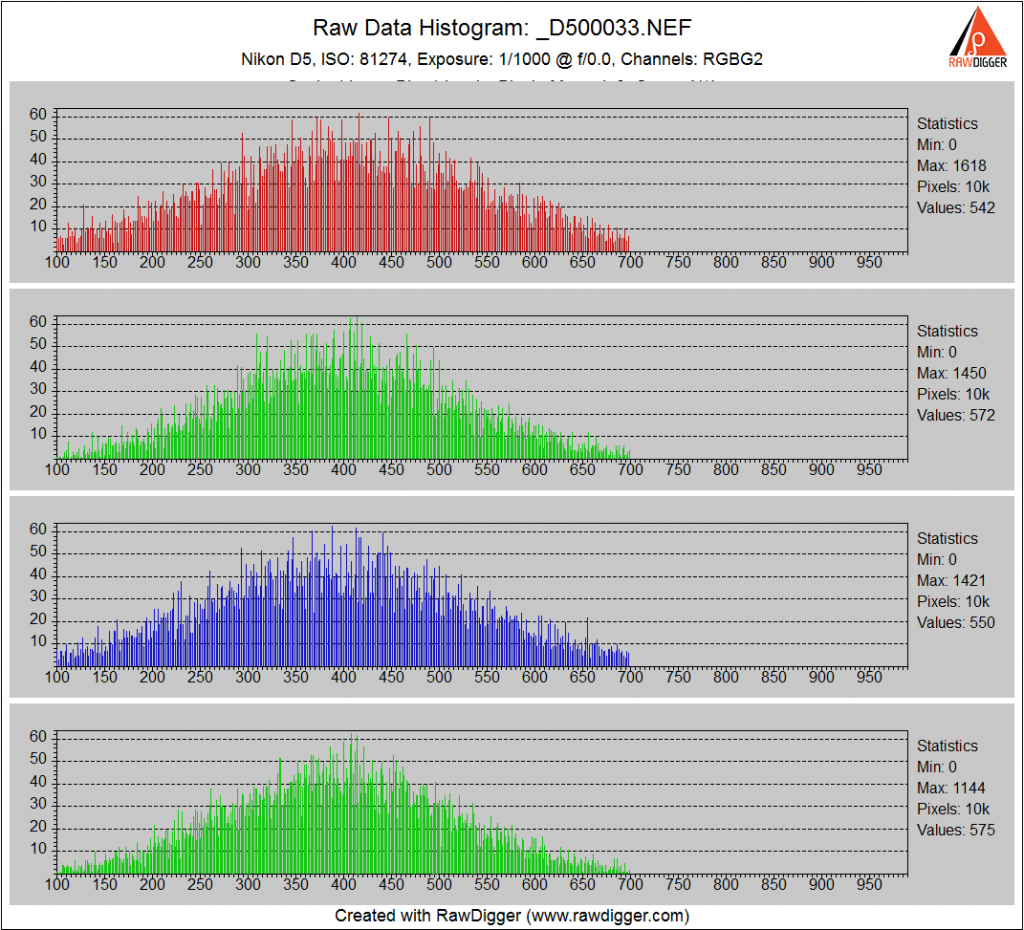
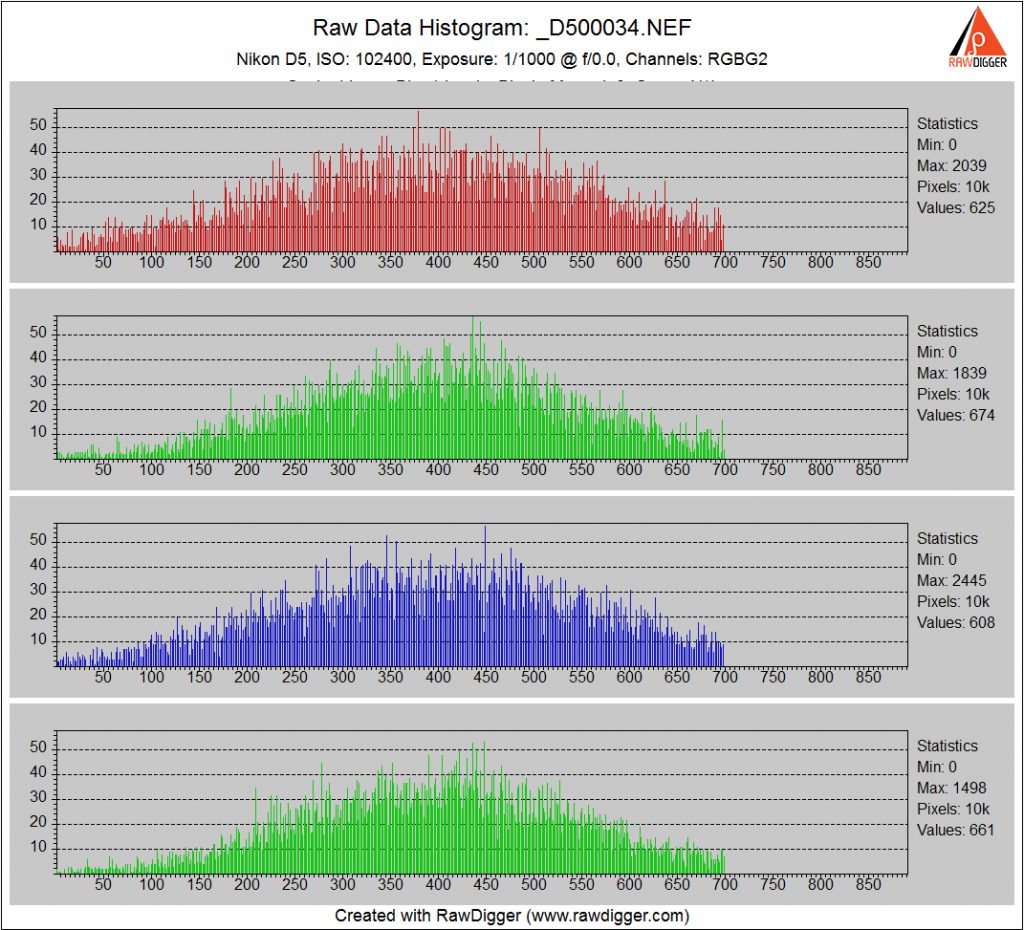
Now there’s something interesting! There’s clipping on the upper end of the histogram. Is the D5 like a TDI VW that knows it’s being tested?
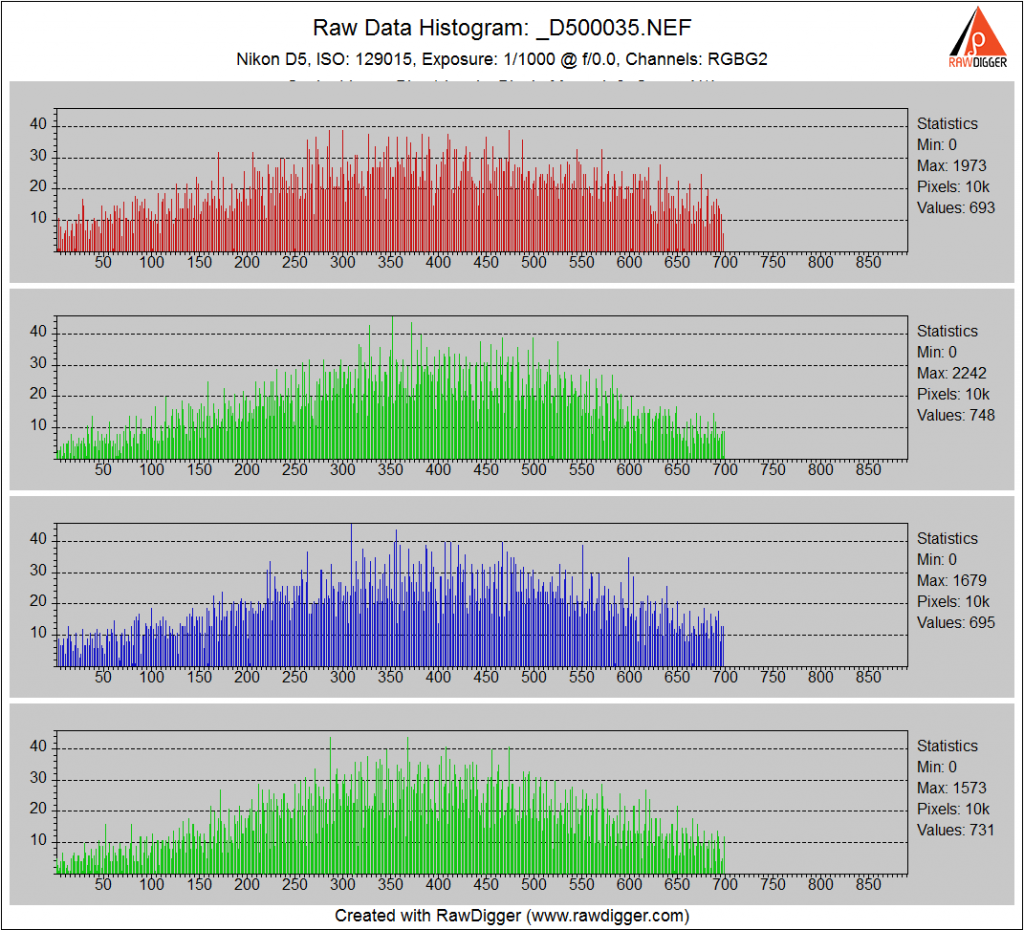
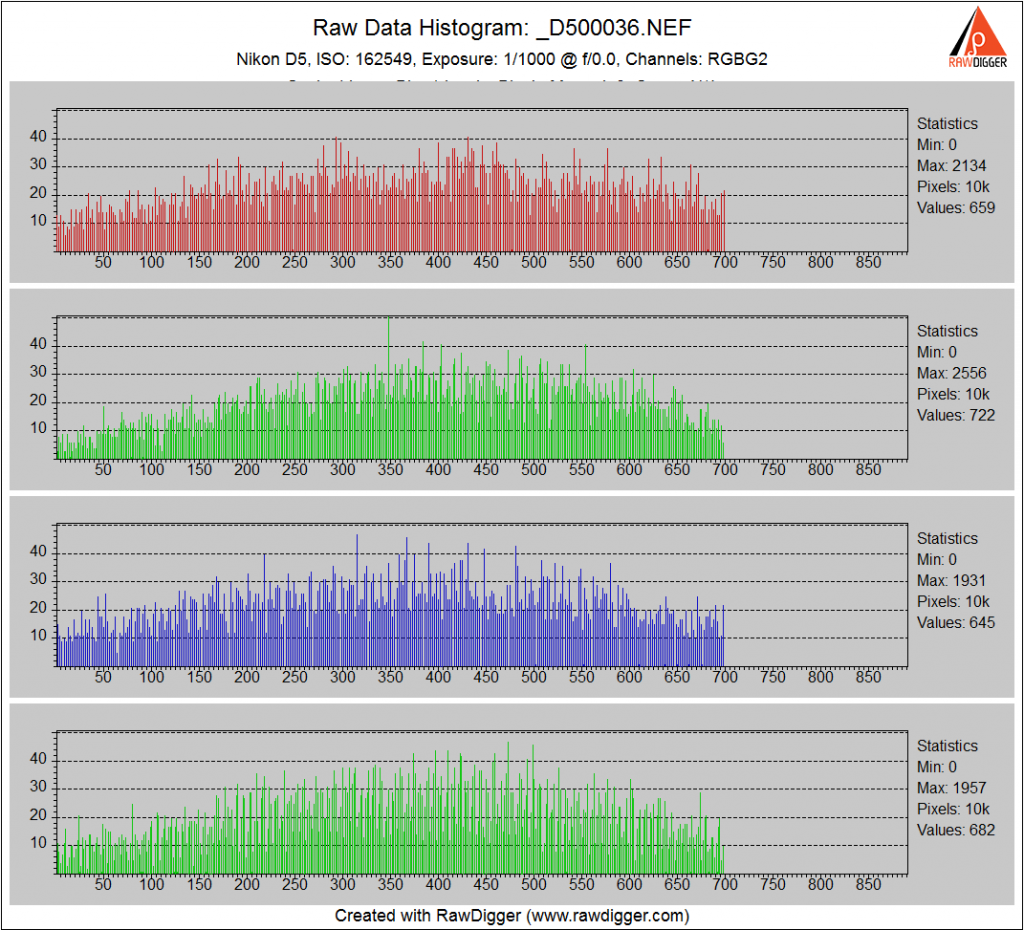
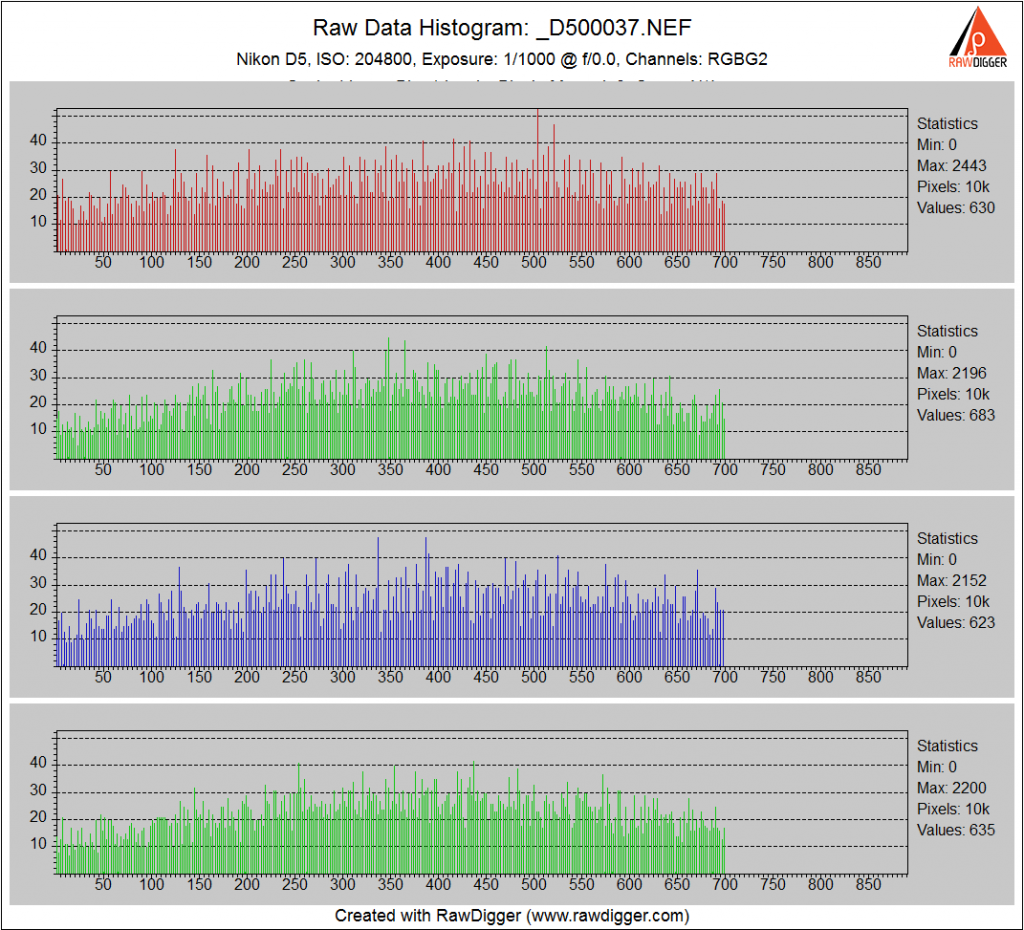
From now on it’s obvious that all the gain is digital.
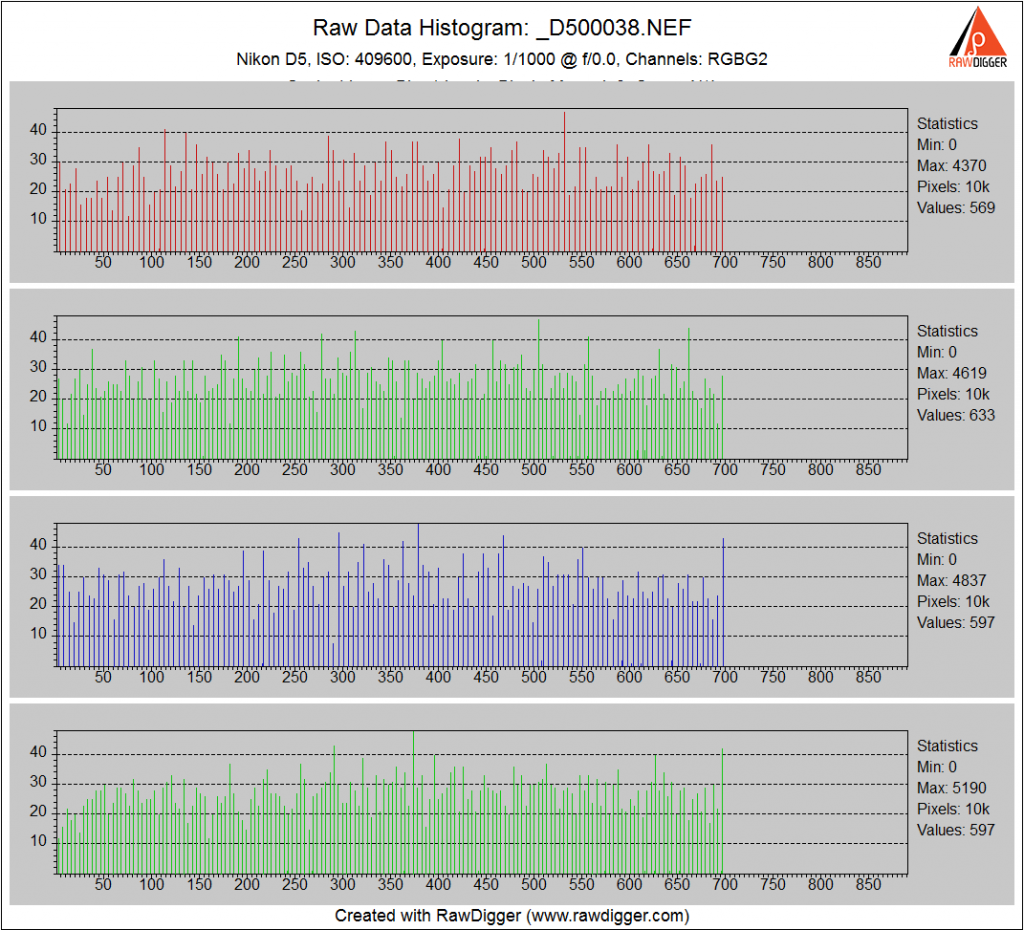
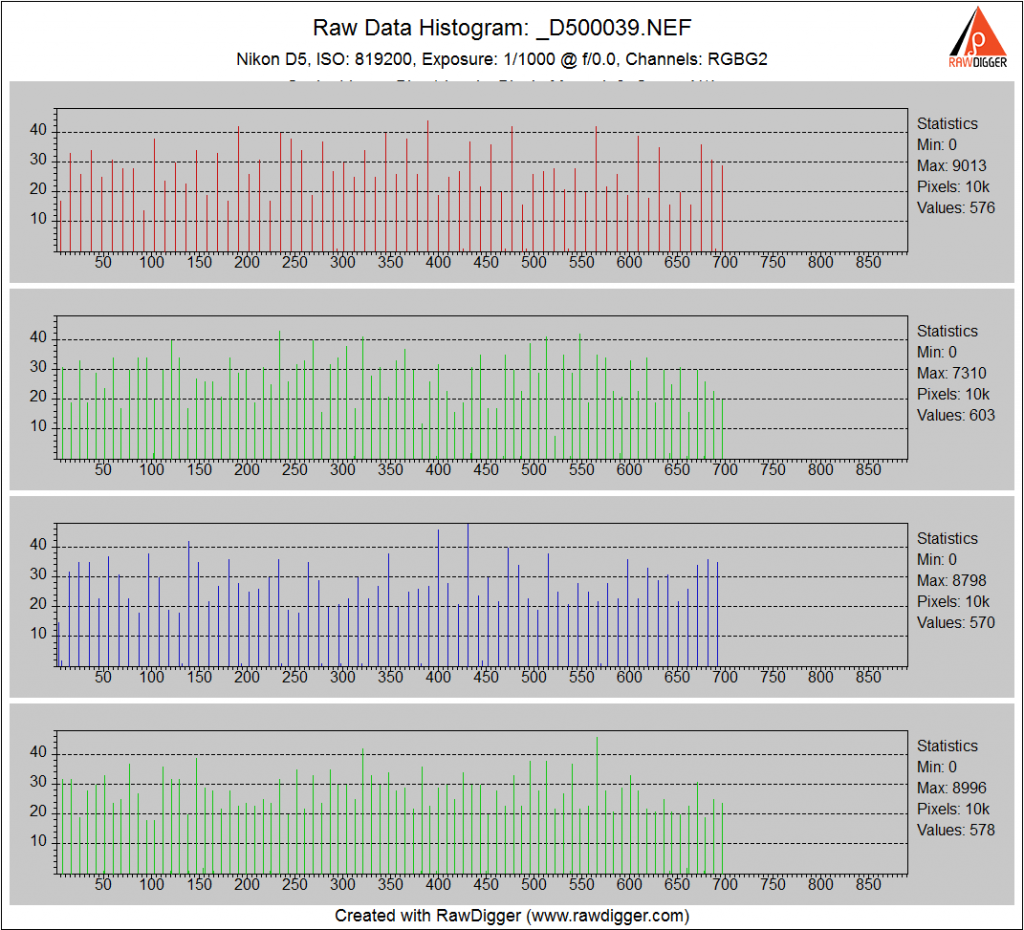
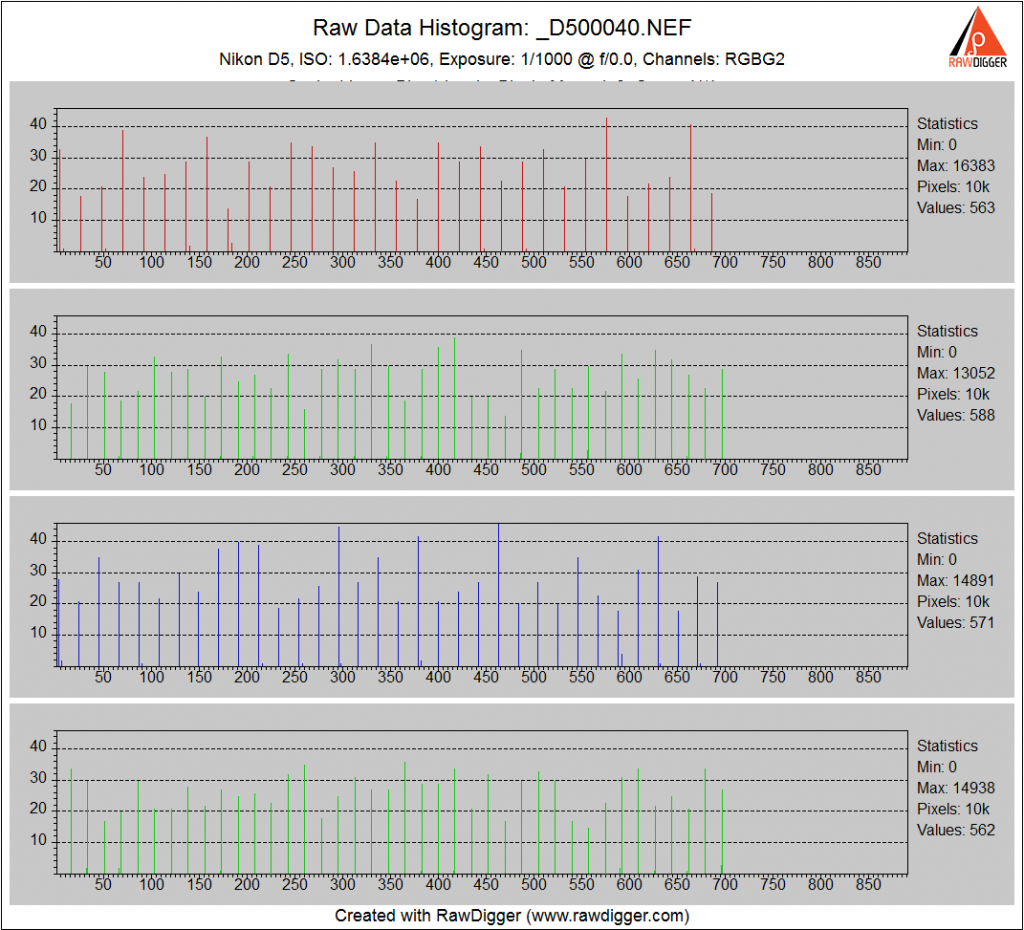
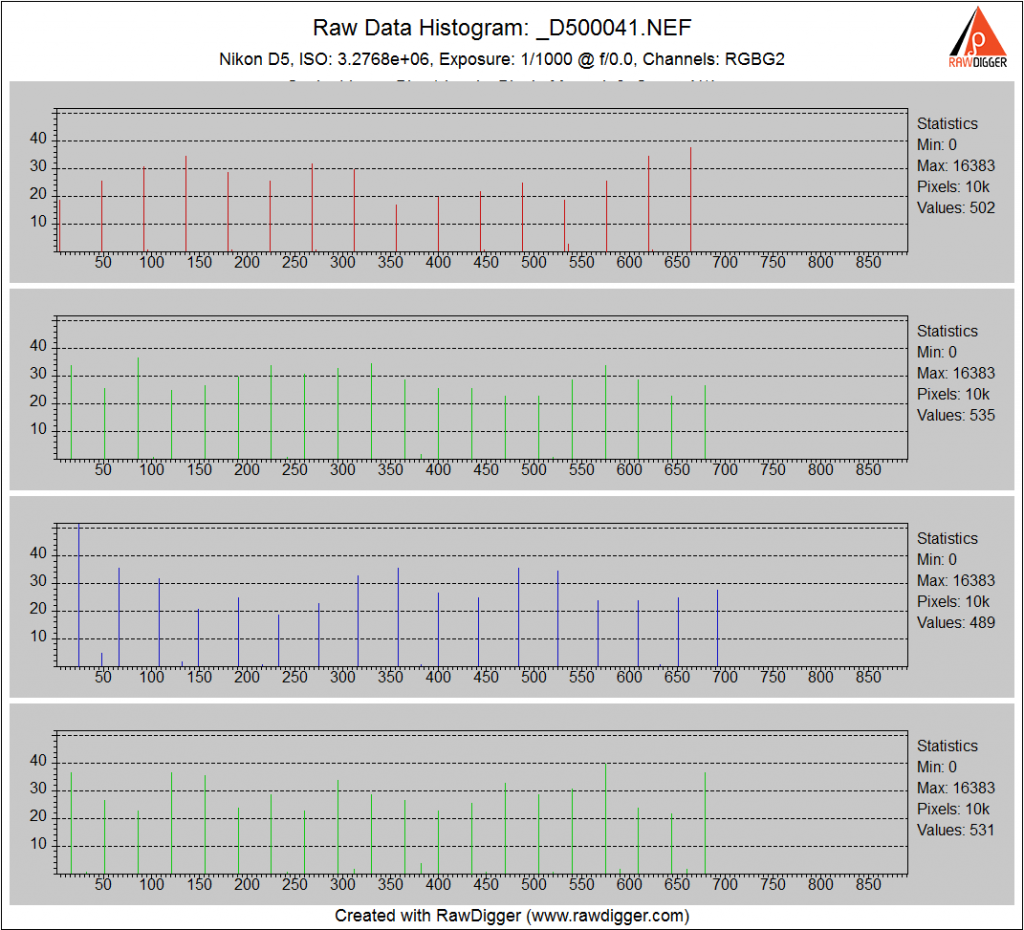
Until the ISO 250K, the histograms look pretty amazing. Can anyone tell if all the gain in the sawtooth sections is digital by looking at the combing?
you said—-From now on it’s obvious that all the gain is digital.
how goddamn dumb are you? ISO is applied gain, its NEITHER exposure nor sensitivity
ISO has nothing to with with native gain / time (shutter, aperture, photosite size)
Can we keep it civil here?
I don’t know what you mean by “native gain”, or “applied gain”(precisely), for that matter. I agree that ISO setting and exposure are two different things.
I have obviously made you mad, but I don’t know exactly how. Maybe you can explain in detail how you think I have erred.
Jim